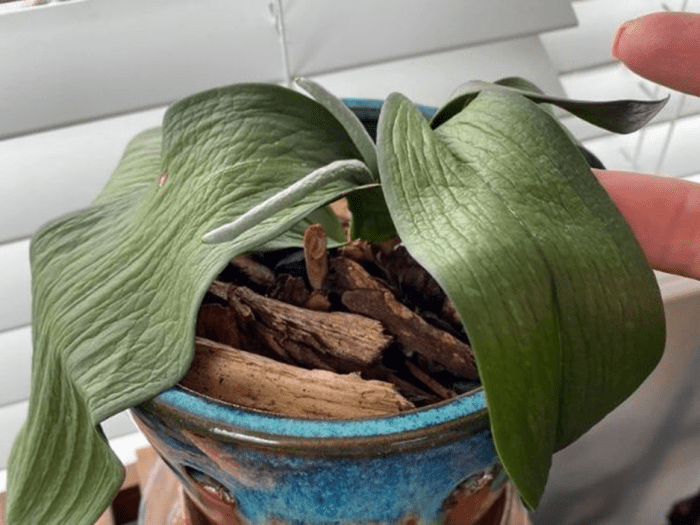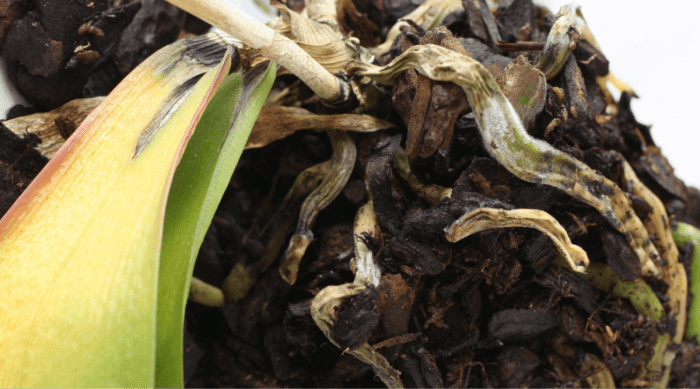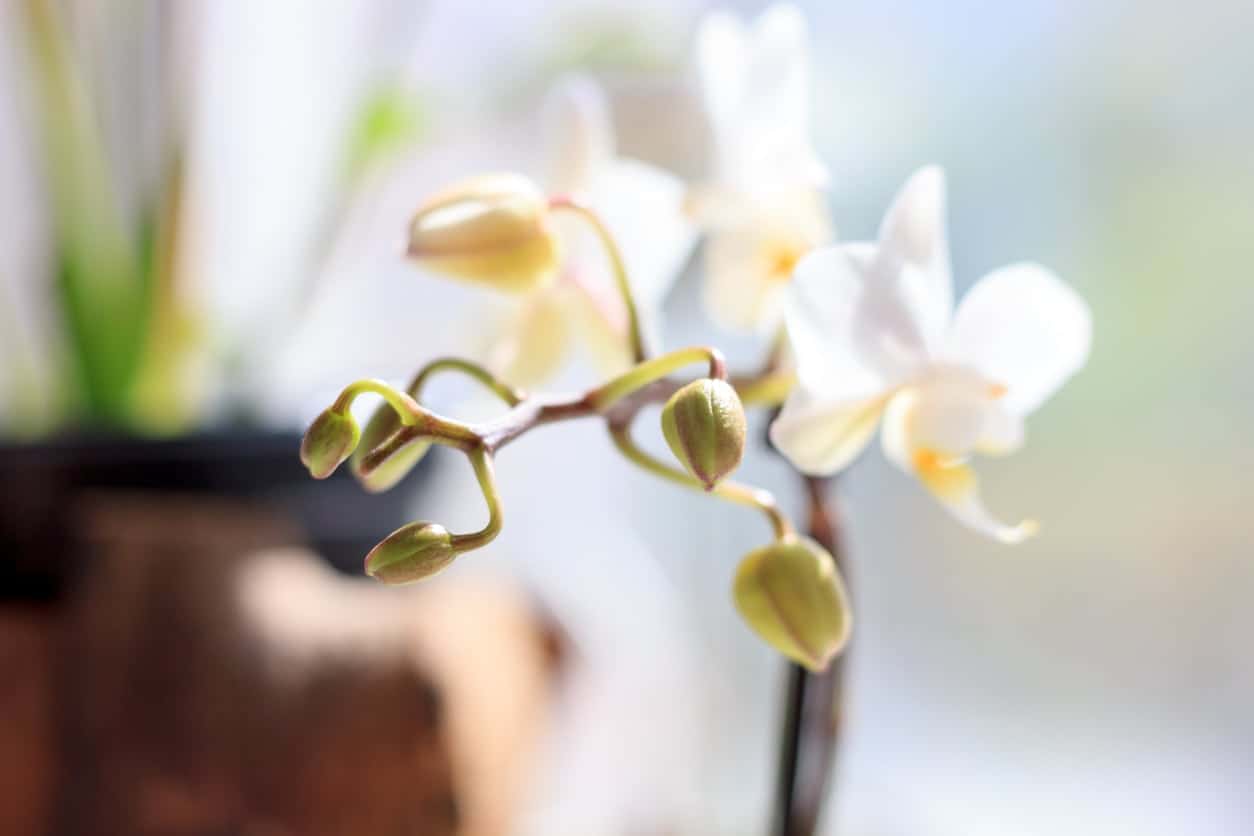Orchid plants have beautiful flowers that stay on the plant for months on end, the best blooms are in the winter time. Or maybe you don’t know, but you’ve noticed that some of your orchid flowers are falling off and that the plant itself looks droopy? Should you notice this sad change then following are available steps to revive your orchid back in to glory. In this guide we share tips to save the day when flowers fall off orchids.
What Are Orchid Flowers?
Orchids are actively flowering plants divided into about 1000 genera and around 25000 species. Because they have such a regal look and feel to them, they are sometimes known as the 'queens of flowers' . There are many different shapes, sizes, and colors of orchid flowers.
These plants are popular houseplants around the world, as they produce so colorful a flower. While this means you don’t need to bring it with you if you have an orchid in your room, you will also need to properly care for it to ensure it thrives long and stays healthy for as long as it can. Here is why:
The flower of an orchid plant is a unique one which evolves inside pseudobulb a structure. If you look after it well, you will see the orchid shoots its flower spikes through the structure and blooms into a beautiful flower. However, if not cared for properly, the orchid flowers will fall off of the pseudobulbs, and do not grow back again.
Before planting your orchids, you will need to understand some divisions that determine where and how to plant them.
Types Of Orchids
You should know the basic types of orchid plants since they can greatly influence the way the orchid blooms in a given plant. You should also know the plant’s cycle; this will help you weed out (no pun intended!) the shedding phase as the problem.
Orchids are either terrestrial or epiphytes. On the one hand, most orchids are terrestrial in the sense that they grow in the ground. However, the other type of orchid, an epiphyte orchid, does not grow in the ground. This plant rather grows on a plant and feeds on air, debris and rain. However, it’s not a parasite and you can plant it in the backyard and have a lovely vertical flower bed.
Moreover, potted orchids fall in two categories: sympodial and monopodial orchids. There are some famous orchids you can plant in the house in either the group, for instance, the Phalaenopsis orchids on the one hand and the oncidium orchid on the other.
The difference between both groups is how the orchids grow;
- Sympodial orchids grow on rhizomes and spread as you move the pot you plant them. However, they will require more handling, specifically, dividing them and repotting them in order that the stem reserves remain healthy.
- Monopodial orchids grow upright and you don’t need to divide them. The orchid roots and stems are easier to handle and thus stay healthy, which keeps them supporting healthy flower spikes.
Now that you understand how different orchids grow, here are a few reasons the flowers can start falling off.
Why Are Orchid Flowers Falling Off?
Mostly, when orchids shed flowers, it is because of a weakened plant's immunity, it is a natural self defense mechanism.
However, you don’t want to panic the plant is dying, so you have to understand its natural cycle when it goes through a shedding stage. But losing flowers can be caused by the post-blooming stage.
A) When The Orchid Flower Has Finished The Blooming Period
As mentioned earlier, orchids have a growth cycle, so they can begin dropping flowers on their own. They have seed, germination, plant growth, bloom and reproduction; pollination; seed spread; and dormancy stages of growth.
While these are the steps for an orchid plant growing outdoors, your indoor plant will not pollinate, so it’ll stay in the reproduction stage for that much longer. Therefore, you will enjoy the stage the most because the plant can make more flowers for a good scene. However, the indoor orchid life cycle also makes the flowering orchid decorum of your room, but the plant will reside naturally and thereby shed the blossom for a while.
If your plant is in the stage of dormancy it might look lifeless, but that’s ok, there’s nothing to fret about. You won't see new roots or flower stems, but after a while the plant will regain its strength and shoot up again. If it does, however, the orchid will still produce a beautiful orchid flower spike, ready to bloom as hopefully as before. Nevertheless, you have to know how much water you can feed the plant to avoid destroying it through excessive or inadequate water.
B) Underwatering
Orchids are like all other plants, requiring constant water to keep hydrated. Unfortunate thing is you may not realize your orchids are under watered until the flowers drop off or appear that the leaves are wrinkling.

image source: gardenine.com
If they are underwatered then the flower cells will collapse and the flower stem will weaken and break, causing the flowers to fall. The root also dies from this, which means there is no chance the orchid can survive.
C) Overwatering
When orchids are flowering and you want the flowers to spike even faster, you may be tempted to give the orchids more water. Of course, overwatering orchids is one of the easiest ways to break a plant, and your flowers will fall off.
When they become overwatered, the roots will not be efficiently able to hold onto the soil and pull in the right amount of the nutrients needed for the orchid to thrive. This will cause the orchid plant to die through the weak roots.
D) Root Rot

image source: orchidbliss.com
However, root rot is not always caused by overwatering as other reasons also can damage orchid roots including very absorbent soil, and non breathable container. If you suspect the roots are rotting you will cut off the infected part using a sterile razor blade and transfer the plant to a better orchid pot.
E) Temperature Shock
Tropical plants, orchids are quite delicate to grow. Consequently, you must plant them in the most draining of soils and potted them out of breathables. Also, if you want flowers from your orchids you are going to have to keep them cold all the time.
Put the pot in an airy corner where there is bright indirect light and make sure it’s out of direct exposure to suns rays. These flowers are very sensitive to low light conditions and will lose color or fall. Too much light, on the other hand, such as direct sunlight will burn the leaves and kill flower cells causing the orchid flowers to fall off.
In addition to growing orchids in proper light conditions, you should also water your orchids in room temperature water. If you have very cold or very hot or stale water, your orchid will shed flowers to go into dormancy to save itself.
F) Bud Blast
When you know you water your orchids right, keep them in the cool areas of a room and protect them from root rot, then the next culprit to fall for when flowers fall is bud blast. When your orchids fall before blooming this condition occurs when the air around them has poisoned your orchids.

image source: gardeningknowhow.com
Flower spikes will not bloom and the buds will start to turn yellow. Some orchids are epiphytes; they thus can feed on the air around them.
So, suppose the air circulating contains undesirable chemicals from perfumes, air fresheners, cigarette smoke, gas leaks, fabric softeners, or paint. After that, they (orchids) will, then, feed on the bad chemicals that would otherwise make the orchids shed the flower for their defense.
Then if you often have a bowl of fruits near that of your orchids too, the ethylene gas emitted from ripe fruits also do poison the plant and maybe trigger fewer flower spikes or more shedding.
Orchid Care For When Flowers Fall Off Naturally
You now know that your orchid’s flower spike will eventually wither and fall off normally and the plant will then go into dormancy. This is necessary so that orchid life cycle goes into a resting phase, but your plant can gather desired nutrients in order to bloom again. Now that flowers start to fall off orchids, here are some things you can do to keep the plant.
A) Cut The Fallen Flower Spike
A flower spike, also the flower stem, is where flowers grow on orchids. Now, given that the orchids have stopped flowering during the dormancy phase you will have to cut the stem in order to get better next time orchids flowering.
You will need to use sterilized scissors or a blade. Cut the spike about 1⁄4 inch (0.64 cm) above a node, then. When cutting above a node you leave enough space for a better orchid spike in the future.
B) Transfer The Orchid To A Fresh Pot
If your orchids are in the post flowering rest period now, then you need to get them ready for even better flower production in the months ahead. If the plant is in a small pot, it may be one of the first things you’ll have to do to ensure good root growth. If you are going to change the pot, you’ll also want to add a new potting medium with better nutrients for the plant.
Before you can repot an orchid, you’ll need to water the potting medium first—so the soil loosens and is easier to remove the plant from. If the plant is back out of the pot, you can peel out the excess medium from the roots by hand before putting it back in the pot. When you have removed the plant from its original pot and discarded the potting medium, transfer the plant to a new, big pot with good drainage and the breathing holes, and put the fresh potting medium.
C) Water Your Resting Orchid Weekly
To get enough nutrients for a new flower spike, the resting orchid needs hydration. If it is well watered, once a week, there is enough moisture in the soil and for root growth, so you should be able to see your orchid flowers again.
You can add water directly but if desired you can also plan on adding three ice cubes each watering day. If using ice cubes don’t put them near roots, as the temperature change will damage them.
D) Fertilize Your Resting Orchid
A resting orchid could get its nutrients from the air in the wild, but after the wild, it may not be so with the orchids in your indoor garden. This means that if you want to see your orchids bloom again, you are going to need to use the best fertilizers to give them nutrients.
A water soluble orchid fertilizer that contains equal parts nitrogen, phosphorus, and potassium (20-20-20) will work just as well. Respectively, these three nutrients will help the plant make enough chlorophyll for leaves and stems, strong leaf tissue and healthy roots.
It’s best to nourish your orchids once a month, but you can forget the rule if your plant is happy. Similarly, there are months where you don’t want to use the 20 20 20 fertilizer and you can introduce a neem oil fertilizer as well.
E) Provide Good Growing Conditions
The plant will only do good in perfect temperature conditions. For this reason, find a place in your home where the temperature won’t get either too hot or too cold. Ideal day temperatures are 75°F and night temperatures 65°F.
In addition, while your orchid needs light to prevent various leaf problems, you also need to observe the amount of light it is exposed to. If your orchid leaves are yellowing or browning on a young plant, it can be a symptom of sunburn because you have it positioned too close to a light source.
If your plant has dark green leaves, however, it may be an indication that the plant isn’t getting much light. If this occurs move the plant closer to a window so that there is more light. Take care to provide indirect sunlight though, as it can sunburn.
Frequently Asked Questions When Flowers Fall Off Orchids
A) Why Do The Orchid’s Flowers Fall Off?
Several factors are responsible for flowers falling on orchids, namely; poor orchid care, orchid exposed to harsh external conditions. However, all orchid lovers know that orchids have a life cycle and a bloom cycle.
The flowers will be beautiful, but if you don’t pollinate (houseplants don’t pollinate) they will drop off and the plant begins the resting phase. Thankfully, since the plant falls in the resting phase, it will grow back greater in a couple of months; therefore, you have to supply the finest care.
B) Do Orchids Bloom Again After Flowers Fall Off?
Yes, your orchid's flowers will form again after the plant completes its natural life cycle. After flowers drops off, a plant gets to its ‘dormancy stage’ where it collects enough nutrients to start the next blooming cycle.
But flowers are falling sometimes it means that perhaps the plant is dying. Take for instance; in case the orchid does not get enough water, then the roots will be dehydrated as well and this will even lead to the death of the plant.
C) How Long Will My Resting Orchid Take To Rebloom?
Different types of orchids bloom after a few months. Some phalaenopsis orchids will bloom once a month or so, for example, while others can rebloom once in a year.
D) How Can I Help My Orchid Rebloom?
If you can't wait until you can see some new flower shoots on your orchid then you'll have to ensure that it receives the best care. To start with, if the orchid's roots appear to be poking out of the pot, you can cut the old flower spike above a stem node, and repot the plant, which will encourage more growth.
Finally, you have to make sure you give enough water each week, fertilizer each month, and keep it somewhere cool, in indirect sunlight.














